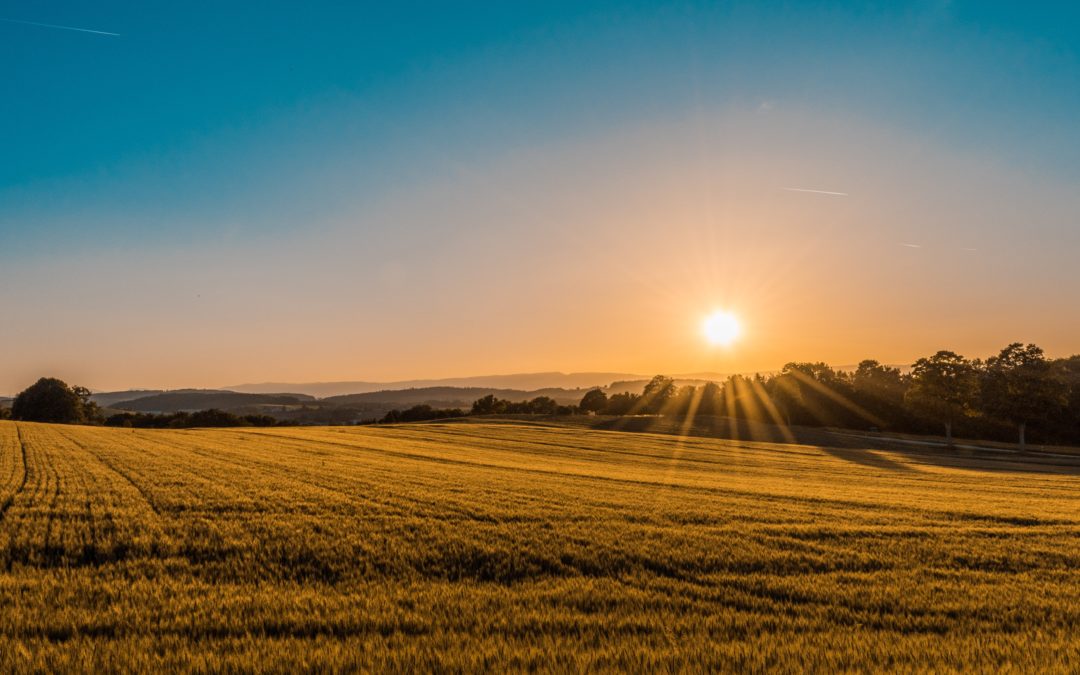As more and more efforts are directed towards challenging climate change worldwide, companies at home in the U.S. are doing their part to direct the power of entrepreneurial farmers towards the problem. Companies like Indigo Ag are investing millions of dollars to develop and increase the popularity of processes that sequester more carbon dioxide in the ground, instead of releasing it into the atmosphere as farmers grow crops.
These processes aren’t all that different from the way that farmers are used to running their farms. In fact, they carry with them some extremely attractive bonuses for farmland and the businesses themselves, such as increased crop and soil health, and better long term sustainability. Of course, there is an upfront cost to new carbon processes.
A recent Wall Street Journal article described the process and its advantages:
“The idea is to harness natural processes to turn farmers’ fields into carbon sinks: Plants withdraw carbon dioxide from the air and combine it with water and sunlight to produce energy through the process of photosynthesis, which embeds carbon in the dirt through the plants’ roots. Soil can retain the carbon for years if left undisturbed.”
The only real problem with these new strategies is the issue of expedient adoption. As farmers increase their use of these strategies, they’ll be able to complement their revenue with the growing market for carbon credits: “Carbon programs also give companies a potential new revenue stream, as they project farm-generated carbon offsets will draw demand from food manufacturers, airlines and tech companies seeking to offset their own carbon emissions.”
That’s why companies like Indigo Ag are offering higher rates for each ton of carbon that farmers are able to prove that they’ve sequestered in the ground. According to a 2021 study from McKinsey, the carbon capture market could expand to as much $50 billion by 2030, helping struggling farmers to stay afloat and continue to do the carbon capture work that will help slow climate change.
But the Journal’s article also commented on farmer reluctance to carbon capture technology adoption. While it is true that “less than 5% of the more than 1,300 U.S. farmers surveyed by McKinsey in 2022 said they participated in a carbon program, and more than 50% of farmers said an unclear return on investment was one of their top reasons for not participating,” the Journal’s limited experience speaking with farmers led to the expression of a view that farmers aren’t excited about this technology.
iSelect has been studying this market niche for years. We frequently talk to farmers as well as to the companies that help them measure their carbon sequestration capacity. Although many of the farmers we speak to are still figuring out the financial details of how they will make carbon credits a part of their business, almost all are very excited by the prospect.
What’s more, carbon credits represent a growing market that should have a net positive effect on the overall cost of future farming practices. The process of soil sequestration is a perfect example of an innovation being financially deflationary. As more and more farmers adopt these practices, the overall cost of future adoption should decrease rapidly.
The farmers we talk to are always looking for ways to improve the efficiency of their businesses. While the most pressing issue currently is the cost of these programs, we are confident that we can mitigate risk for farmers everywhere. iSelect is committed to supporting and investing in technology that will drive down the cost of soil sequestration, such as biochar, agri forestry, and cover cropping.
While it’s true that adoption of carbon sequestration farming technologies will take a significant amount of time and effort going forward, it’s also true that farmers everywhere are enthusiastic about this process. As we work to make carbon credit tech more affordable for more people across the country and the world, we’re seeing a related rise in interest.
At iSelect, we envision a future where competitively priced carbon credits will be an essential part of every farm’s annual budget, going far beyond the amount of money that farmers are seeing from the credits now. If we continue to develop these technologies, we know that we’ll see the percentage of the population that uses them grow.





